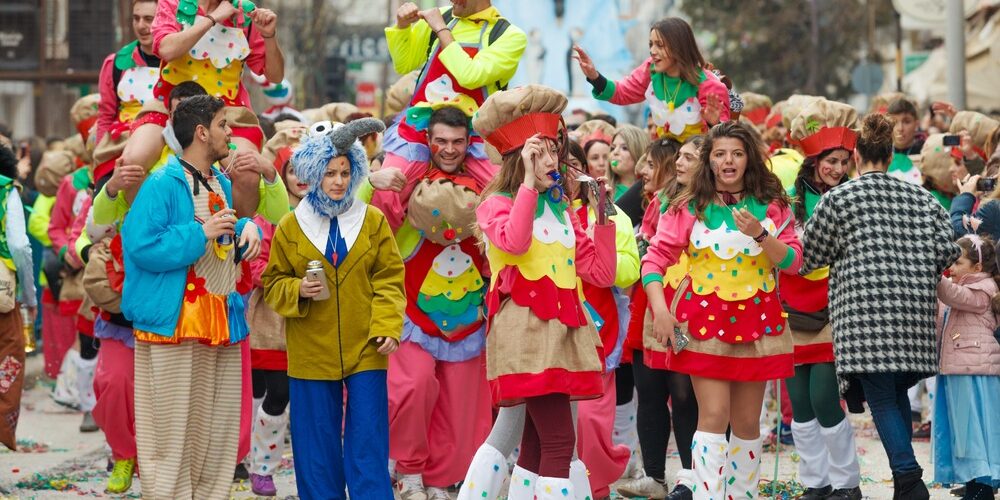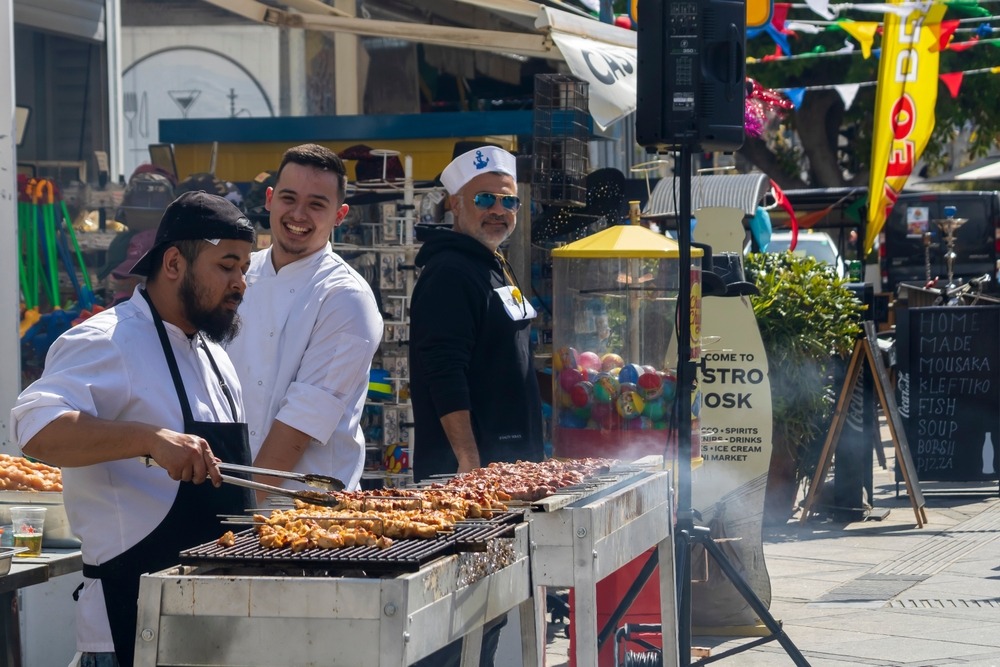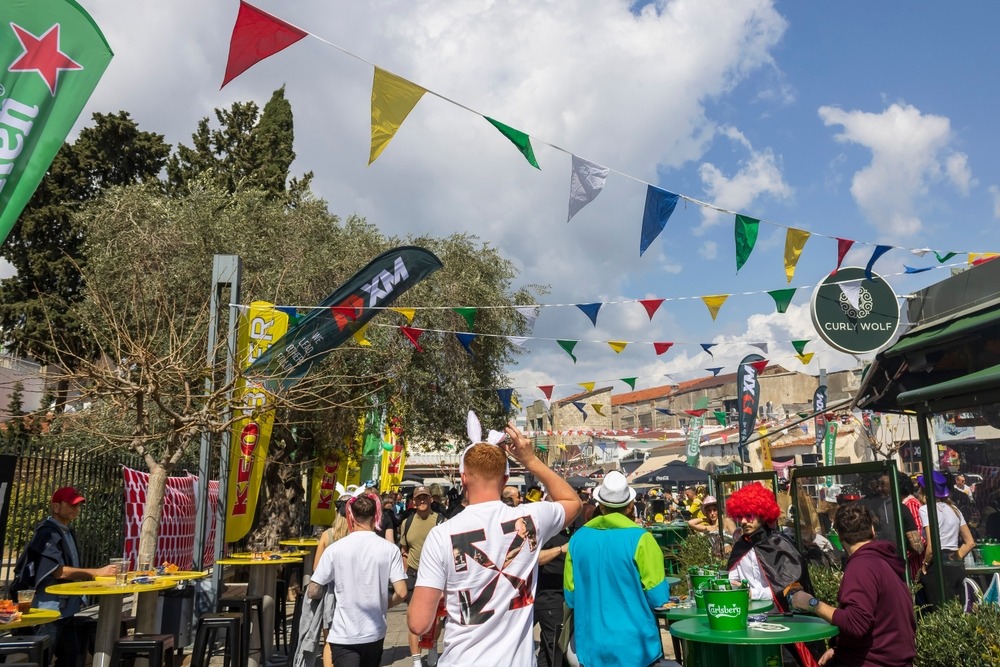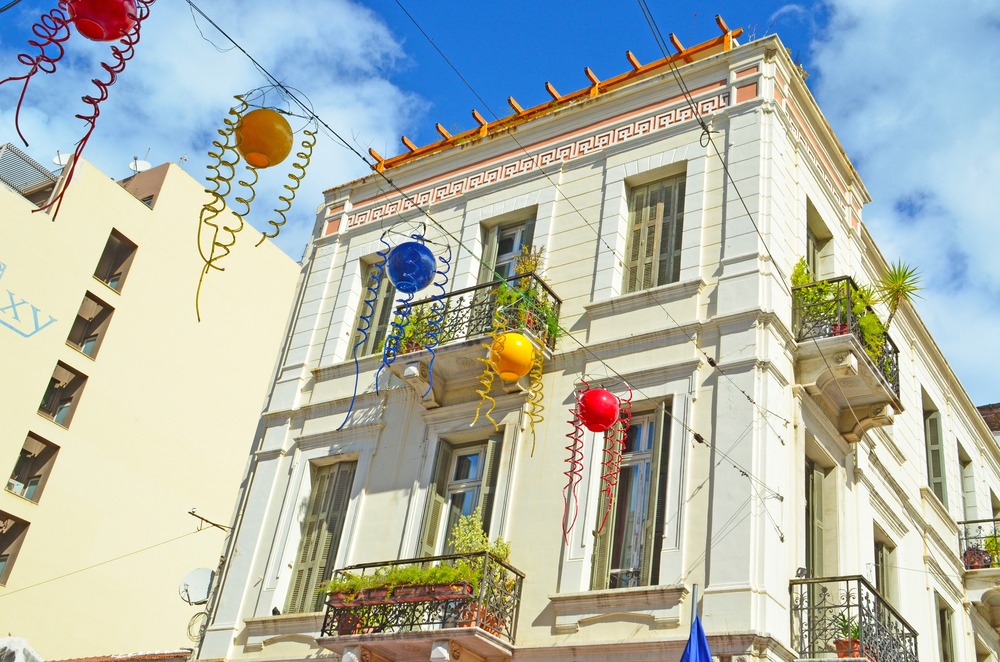Apokreas: Greece’s Carnival Season and Its Evolution Through the Ages
Apokreas, Greece’s vibrant carnival season, is a lively festival marking the last opportunity for feasting and celebration before the solemnity of Lent. Derived from the Greek words “apo kreas,” meaning “away from meat,” Apokreas traditionally signals the period leading up to the Orthodox Great Lent, inviting communities to come together in joyful revelry. Though rooted in ancient pagan customs and influenced by the Christian calendar, Apokreas has evolved over the centuries, embracing a mix of rituals, costumes, feasting, and dances that span several weeks. This post explores Apokreas in detail, focusing on its specific traditions, notable days like Tsiknopempti, and how the festivities align with and differ from Mardi Gras.
The Historical Origins of Apokreas
The roots of Apokreas go back to ancient Greece, with strong connections to Dionysian festivals honoring Dionysus, the god of wine, fertility, and revelry. Ancient Greeks celebrated this season with theatrical performances, feasts, and exuberant rituals invoking the god’s blessings for the fertility of the land and the well-being of communities. These Dionysian celebrations often included masquerades and dramatic performances, setting the foundation for what would later evolve into the carnival traditions associated with Apokreas. With the arrival of Christianity in Greece, many of these customs were adapted to fit the religious calendar. Apokreas became a time of feasting and celebration leading up to the austerity of Lent, transforming into a “farewell to meat” period and merging the ancient revelry with Christian symbolism. Over time, the festival took on its distinctive character, featuring specific days, elaborate costumes, and unique regional variations.
Key Days and Traditions of Apokreas
Apokreas spans three weeks, each with its own unique customs and significance, leading up to the final day known as Clean Monday (Kathara Deftera), which marks the beginning of Lent.
1. Prophoni or Pre-Announcement Week
The first week of Apokreas, known as Prophoni, is a preparatory week, signaling the start of the festive season. During this time, people begin making arrangements for the upcoming celebrations, including gathering costumes, preparing traditional foods, and organizing parades and parties. Although not as intensely celebratory as the subsequent weeks, Prophoni sets the tone for the rest of Apokreas, with minor feasts and family gatherings.
2. Kreatini, or Meat Week
The second week of Apokreas, Kreatini (also called Meat Week), is marked by an abundance of meat-centered feasts. Meat Week is considered the last week when eating meat is permitted before Lent, as people will transition to vegetarian dishes in the following days. Communities celebrate with family barbecues, communal feasts, and outdoor events where traditional Greek meat dishes such as souvlaki, lamb, and pork take center stage. Kreatini culminates with Tsiknopempti, or “Smoky Thursday,” one of the most famous days of Apokreas.
Tsiknopempti (Smoky Thursday)
Tsiknopempti, meaning “Smoky Thursday,” is a day dedicated to the love of grilled and smoked meats. It’s named after the smoky aroma that fills the air as people across Greece gather to barbecue. Town squares, restaurants, and even home courtyards become sites of smoky celebration as people grill meat, marking a final indulgence before the Lenten fast. Tsiknopempti is a time for both feasting and socializing, with many people attending parties or dining out at local tavernas, often accompanied by live music and dancing. Tsiknopempti festivities can be likened to Mardi Gras traditions in other countries, as both emphasize indulgence before the season of restraint, making it one of the highlights of Apokreas.
3. Tyrini, or Cheese Week
The final week of Apokreas is known as Tyrini, or Cheese Week, marking the transition away from meat and into a diet of dairy products. During Tyrini, meat is entirely avoided as a preparation for Lent, and meals focus on dairy-based dishes such as cheeses, eggs, and butter. This week also sees a rise in pastry-making, with traditional cheese pies, custards, and dairy-rich desserts featured at family tables. Tyrini serves as a symbolic step away from heavier foods and towards the lightness and simplicity of Lent. The week culminates in Tyrini Sunday, a day filled with family gatherings and celebrations, leading into Clean Monday, when the fasting season officially begins.
Clean Monday (Kathara Deftera)
Clean Monday marks the end of Apokreas and the beginning of Great Lent. Known for its focus on “cleansing” oneself both spiritually and physically, Clean Monday is celebrated with a different kind of festivity, centered around outdoor picnics, vegetarian meals, and kite-flying. People enjoy traditional Lenten foods, such as unleavened bread (lagana), olives, tahini, and vegetables, in a symbolic gesture of simplicity and spiritual readiness for the 40-day Lenten period.
Traditional Apokreas Festivities and Customs
Throughout Apokreas, the streets of Greek towns and villages come alive with music, dance, and color. Traditional celebrations include masquerades, costumes, and parades, each representing a nod to ancient Dionysian festivals.
Costumes and Masquerades
One of the defining features of Apokreas is the use of costumes and masks. These disguises, ranging from simple face masks to elaborate full-body costumes, allow people to embody different characters, from mythical figures to humorous caricatures. Costumed revelers gather in the streets and join in parades, adding to the playful and sometimes satirical atmosphere of Apokreas. Certain areas of Greece, such as Patras, are known for their extravagant parades, where participants dress in fantastical costumes, creating an atmosphere of fantasy and celebration.
Parades and Community Gatherings
Carnival parades are the highlight of Apokreas, especially in larger cities like Patras, which hosts one of Greece’s most famous carnivals. The Patras Carnival is a massive celebration with grand floats, marching bands, and a variety of performances that draw visitors from across the country and abroad. Other towns and villages host smaller parades, featuring local customs, folk dances, and community skits that are rich in local character and humor. Many regions incorporate traditional folk music and dance, with celebrations often lasting into the night.
Feasting and Traditional Foods
Apokreas is synonymous with feasting, and each week is marked by specific culinary traditions. The festival begins with hearty meat dishes during Kreatini and shifts to dairy-rich foods in Tyrini, with a variety of Greek specialties enjoyed along the way. Tsiknopempti showcases grilled meats, from lamb chops to sausages, and is one of the most indulgent days of the season. Cheese Week highlights dairy products, with dishes like tiropita (cheese pie), spiced custards, and creamy sauces. Even after the fasting begins, food remains an important part of Apokreas, with Clean Monday foods like lagana (a flatbread with sesame seeds), taramosalata (fish roe spread), and pickled vegetables forming a unique part of the celebration.
Apokreas Compared to Mardi Gras
Apokreas has many similarities with Mardi Gras traditions in other parts of the world, such as the colorful parades, costumes, and indulgent feasting. Both Apokreas and Mardi Gras serve as “farewell to flesh” events before Lent, celebrating abundance and joy before the austerity of the fasting season. However, Apokreas has a unique focus on the themes of transition from meat to dairy and the incorporation of ancient Greek customs, particularly the Dionysian influence, which adds a distinctly Greek character to the festival. While Mardi Gras tends to concentrate on the days leading up to Ash Wednesday, Apokreas spans several weeks, allowing for a more gradual buildup of festivities that crescendo in Tsiknopempti, Tyrini Sunday, and the final Clean Monday gatherings.
The Evolution of Apokreas Through the Ages
Though its roots are ancient, Apokreas has evolved significantly over time, with some customs fading and others adapting to the modern era. In rural communities, many of the older rituals, such as traditional folk dances, community parades, and mask-making, are still upheld with pride. Costumes and masks have also become more elaborate, influenced by contemporary culture, with themes often blending historical characters with modern figures or humorous takes on social issues. Urban areas, especially in cities like Patras and Athens, have seen Apokreas transform into a large-scale celebration featuring grand parades, live music, and professional performances, drawing in massive crowds. Cities have also begun organizing organized events for children, featuring storytelling, puppet shows, and costume parties, ensuring that younger generations remain connected to Apokreas.
In recent decades, Apokreas has also become popular with tourists, leading some towns to create additional events, tours, and workshops, allowing visitors to experience the festival’s rich traditions firsthand. Despite these modern influences, Apokreas remains a deeply rooted cultural celebration, preserving its essence of unity, joy, and a warm farewell to the indulgences of winter. It serves as a bridge between the past and present, reminding Greeks of their heritage while bringing communities together in an atmosphere of laughter, music, and kinship.






































